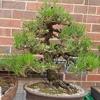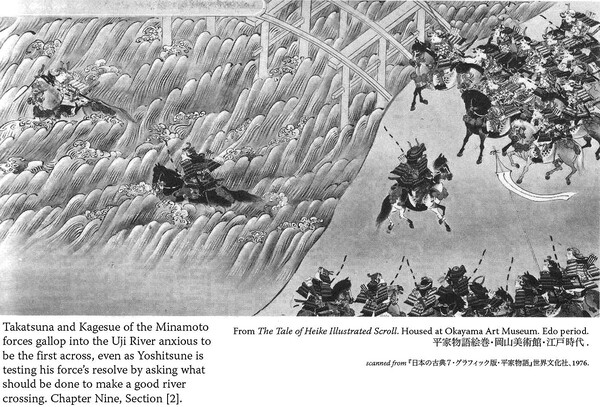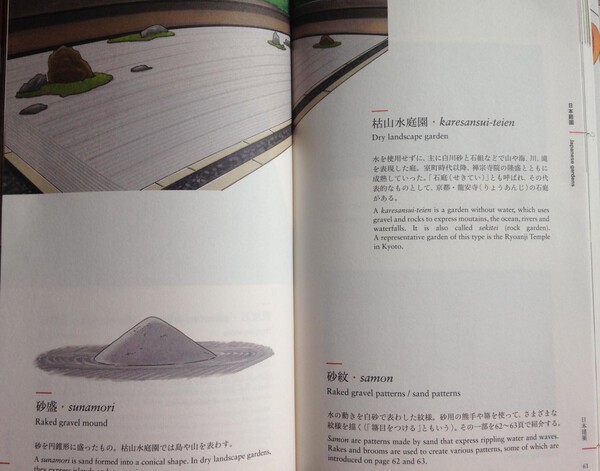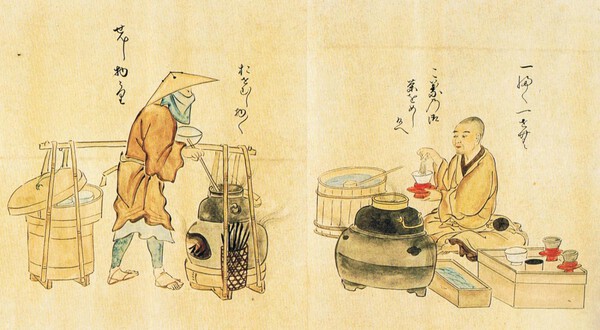-
Posts
1,813 -
Joined
-
Last visited
-
Days Won
9
Henry Wilson last won the day on August 17 2019
Henry Wilson had the most liked content!
Profile Information
-
Location:
Tokyo
Recent Profile Visitors
The recent visitors block is disabled and is not being shown to other users.
Henry Wilson's Achievements
-
Henry Wilson started following BIG
-
BIG started following Henry Wilson
-
First you said this: "a clean brush will not obviate the grit.” Then Ford said this “a soft clean brush and warm water/gentle soap will rarely be a problem. To be extra careful one could use an artists paintbrush, natural bristles, instead of a toothbrush.” Then you changed tune and said “Basically what I have been advocating all along. Loose the toothbrush and use a natural bristle artists brush” And you then said “Review my remarks again, I SAID TOOTHBRUSH. This is a charming pastime but....Ich bin müde!” I agree, you did say toothbrush but not quite in the way that you are implying. Word! NRN
-
Also, you did say a brush is not good But thanks for the clarification. Personally, I am finding this discussion very productive.
-
I have just done that a number of times and don't see much of an alignment to be honest. For example "boiling in distilled water" does not quite align with "briefly soaking it in a solvent, such as pure alcohol or benzene". Boil and soak are different processes, also boil is usually not a brief activity, unlike dip in boiling distilled water. Also distilled water and pure alcohol / benzene are different solvents... I don't disgaree or agree with your opinion, I am just trying to keep the record straight for the benefit of my own learning. Sorry to be cantankerous and I will leave it at that.
-
Really? But you said this...
-
Nobody mentioned doing such a thing, never mind using an abrasive slurry.
-

Which Of Your Tsubas Best Embodies The Wabi-Sabi Aesthetic?
Henry Wilson replied to lotus's topic in Tosogu
And that's me on the left (striped-socks) wondering what's the point of leaving breadcrumbs??? -
The fuchi theme is from the Tale of Heike, chapter entitled Battle on the Bridge. It depicts Ashikaga Tadatsuna on horse and the planks of the broken bridge over Uji River. Suggestion: If the original pics were rotated 90* they would be easier to study.
-

Which Of Your Tsubas Best Embodies The Wabi-Sabi Aesthetic?
Henry Wilson replied to lotus's topic in Tosogu
Hi Steve Thank you for your thoughts. The quote is from “Sources of Japanese Tradition: From Earliest Times to 1600” by Wm. Theodore de Bary, Carol Gluck, Arthur Tiedemann. Columbia Uni Press 2013, p.395 https://books.google.co.jp/books?id=aWxN1Fq_ueoC&pg=PA395&redir_esc=y#v=onepage&q&f=true Wiki led me to it I think. It has been embedded in my post above. Sorry I didn’t include it. -

Which Of Your Tsubas Best Embodies The Wabi-Sabi Aesthetic?
Henry Wilson replied to lotus's topic in Tosogu
Thank you for the stimulating conversation gentlemen. I was a bit puzzled at first to think that wabi and sabi as a collocation was strange. Realising I never thought or have read about it, l did some digging and found these links (attached for others who might also be puzzled). Tadao Ando at http://nobleharbor.com/tea/chado/WhatIsWabi-Sabi.htm states: “The words wabi and sabi were not always linked, although they've been together for such a long time that many people (including D. T. Suzuki) use them interchangeably. One tea teacher I talked with begged me not to use the phrase wabi-sabi because she believes the marriage dilutes their separate identities; a tea master in Kyoto laughed and said they're thrown together because it sounds catchy, kind of like Ping-Pong.” This was a small revelation to me. I assumed that they were always together however as Ford, Steve and others point out above, in older literature they never seem to appear as wabi-sabi as one, and wabi seems to be predominate. I get the impression, as I can’t find a direct scholarly reference, that wabi-sabi (the phrase) started to emerge when attitudes towards the inherent meaning of wabi and sabi (the words) began to shift from negative to positive. “Originally, wabi's main feeling was of loneliness. What distinguishes wabi from standard loneliness is this feeling comes from living in nature, far away from society. Imagine a sad, solitary hermit, and you're on the right track. A hermit's life even used to be called wabizumai 侘住まい. Sabi 寂 on the other hand, is a bit simpler, It has been described as "chill," "lean," or "withered." It shares a pronunciation with 錆 (to rust), and this connection with degradation is not coincidental. In the 14th Century, these connotations began to change. The hermit was no longer a sad outcast, but a wise man freed from the trappings of an increasingly decorated and artificial Japanese society. The words drifted closer together until they became interchangeable or, more commonly, combined. Wabi-sabi began to imply rustic simplicity in a positive light, or the grace that comes with age and use.” The above is paraphrased from https://www.tofugu.com/Japan/wabi-sabi/ Ford wrote an interesting summary Generally speaking, as I understand it, in the medieval times, tea was being consumed in two different ways by the dominate social groups; by Zen monks during meditation (astringency, austerity), and, by the ruling elite in a comparatively frivolous way at Heian period style events such as moon viewing parties, based on the ancient Chinese ideal (material expression). This video https://m.youtube.com/watch?v=QmHLYhxYVjA reveals that Murata Juko, the early pioneer of tea ceremony noticed this and wrote Kokoro no fumi (心の手文, "Letter of the heart") in the late 1400s. It indicated he wanted to harmonise the Japanese and the Chinese tea styles to bring people together. Reason being, for Juko, excessive concern with the imperfections and rustic aesthetic of Japanese utensils was as bad as a preoccupation with the regular forms and perfect glazes of Chinese ceramics, so a merging of the two different attitudes was necessary to keep a balance. Reference: https://books.google.co.jp/books?id=aWxN1Fq_ueoC&pg=PA395&redir_esc=y#v=onepage&q&f=true Do these observations suggest that the wabi-sabi collocation came about at the time to temper both sides of the tea extreme and unify them, so it’s first usage or at least conceptualisation could be possibly accredited to Murata Juko in the late 1400s? What do others think? -
Some context to the above picture https://en.m.wikipedia.org/wiki/Kanamara_Matsuri
-
It depends what you mean by a tortoise/turtle head. ???? WARNING: naughty joke! https://www.google.co.jp/amp/s/www.urbandictionary.com/define.php%3fterm=tortoise%2bhead&=true Joking aside, I can see what you mean as it does look like a little face, but personally I don't think the motif represents any Testudines of any form. I am willing to have my mind changed thought.
-
To the right I see two frolicking horses. The composition on the left...? Guido's suggestion seems plausible. But I keep seeing two rocks and between them the fanshape makes me think of racked gravel pattern (青海波紋 seigaihamon). Could the bit on the left represent a dry landscape garden? (Source: an illustrated guide to Japanese traditional architecture and everyday things. Yamamoto Seiichiro) Put them together and the overall composition represents the cultured samurai ideal of the Edo period. Just some thoughts.
-

Dai Token Ichi 2019
Henry Wilson replied to Baka Gaijin's topic in Sword Shows, Events, Community News and Legislation Issues
https://www.nihonto.com/2019-dti/ -
I say it is an aesthetic convention. By looking at the moon it would be fixed in the wolf's locality. This would reduce the implied scale of the composition and its overall artistic depth. Or something like that. Perhaps!!!
-

Which Of Your Tsubas Best Embodies The Wabi-Sabi Aesthetic?
Henry Wilson replied to lotus's topic in Tosogu
Hi Steve Thank you for the thoughtful and interesting post. Yes, by main stream I meant the social caste who would have been involved, that is to say ‘mid-level bushi, maybe even some lower-level bushi, along with those merchants who had amassed enough wealth to get to "play" in the upper-echelon circles’ which you eloquently stated. ???? Concerning Buddhism, the impression I get is that medieval Buddhism was very different to the Buddhism of the Heian period. In the Heian period it was controlled by the aristocracy and was very complicated and expensive. I think this style started to change when salvation-for-all type schools began to appear (such as Zen, Nichiren etc), the main impact being that this saw Buddhism spread to all classes of people. Point being is that I think for the common person any Buddhist principles would have become social norms as society was based on them, pretty much in the way that Shinto principles were. For example, appreciation of the natural world, taking only what you need are Buddhist principles that are prevalent in tea culture as well as medieval and early modern social culture. By the way, this book is a good read on the sustainable early modern Japan. The illustrations alone are excellent. Just Enough: Lessons in Living Green from Traditional Japan by Azby Brown https://www.goodreads.com/en/book/show/6608253-just-enough Also, open tea houses were popular from the medieval times shown in the illustration as being quite humble and practical. And tea was and still is available at rest stations on highways, around temples and shrines for pilgrims, and today is the basic default refreshment. I think that considering these points, it would be easy to assume that in the past, everyone had a chance to enjoy and appreciate the cult of tea, but to what extent (materialistically, aesthetically etc) depended on their rank in society. The first reference to wabi sabi as double barrelled phrase? Good question. The obligatory web search yielded nothing. I get the impression it is a kind of meta-word/phrase, coined to conceptualise and legistmise wabi cha, first used as a sort of nomenclature in a treatise somewhere. I bet it entered the vernacular around the time of Sen no Rikyu (1520s). Wild speculation but possible. I hope others take up this discussion.








